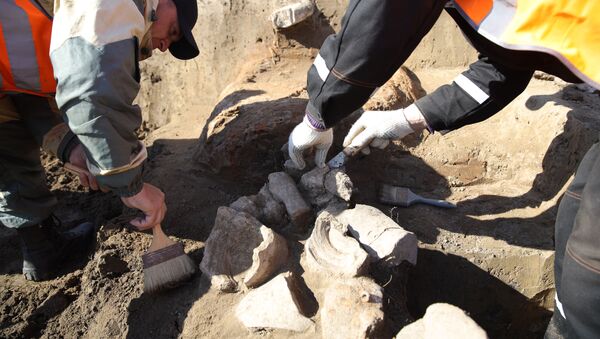Russian paleontologists have just discovered a nearly intact skull of a Caucasian Elasmotherium (ancient rhinoceros) – the second skull of this species to be discovered in the world, and the first one belonging to a male, a leading researcher at the Southern Scientific Centre of the Russian Academy of Sciences Vadim Titov told RIA Novosti.
“This year we found the remains of about a dozen elephants and three ancient rhinos, but the most interesting finding was almost a whole skull of the Caucasian Elasmotherium", Titov said.
He also confirmed that it is not the first finding of this kind, recalling that few years ago a team of paleontologists at the mud volcano Sinaya Balka had discovered the skull of a female Elasmotherium.
“The uniqueness of the current finding is that it was preserved much better than the previous skull found, which is quite important, taking into account the geological age of the field, which is 1.2–1.4 million years old (early Pleistocene)", explained Titov.
The discovered skull has a large dome with an attached horn and is more than 1.5 metres in length. Titov believes that this means the individual rhino was about 4.5 metres long and about 3 metres high.
The skull has now been delivered to the Azov Museum-Reserve for restoration.
Excavations and research work have been going on in the Krasnodar Region for several decades now, with the remains of at least 85 elephants and at least 36 Elasmotherium having been discovered in the mud volcano Sinaya Balka. Scientists believe that thick-skinned animals came to the mud in such large numbers in order to bathe and drink water, but died from the toxic emissions from the volcano.
One of the most sensational discoveries in the area was made in 2016, when archaeologists found a part of a stele with an inscription dating back to the time of Persian King Darius I in the 5th century BC.
Taman Peninsula is located in the Krasnodar Region of Russia and is now linked to the Crimean Peninsula via a bridge across the Kerch Strait that was opened in May 2018.




